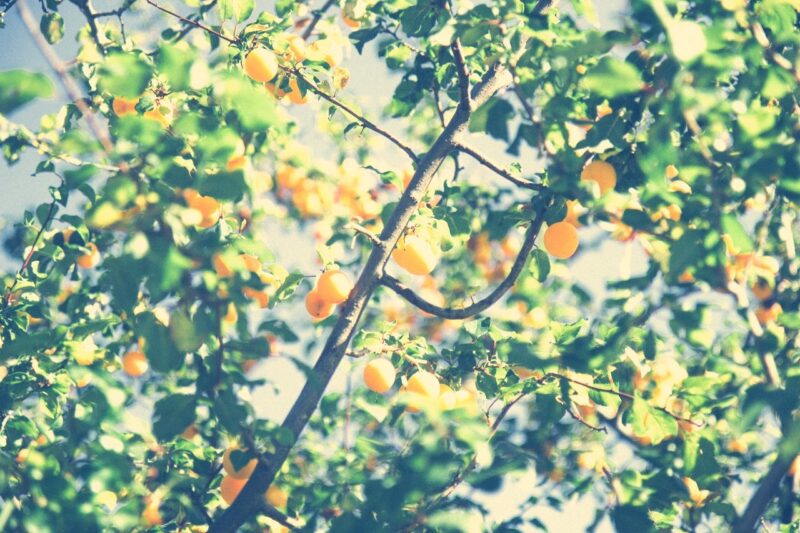“You can see everything in the universe in one tangerine.” – Thich Nhat Hanh
In a village in northern Corsica, there is a tree that bears lemons and oranges,
at the same time, often on the same branch,
sometimes, within the same fruit; part lemon, part orange! Bright, almost neon yellow, impossibly acidic, and soft, orange, syrupy sweet, “alternating like a soft-serve ice cream” machine.
The tree, and others like it, has been the subject of intense study by the world’s premier pomologists at the Citrus Biological Resource Center in San Giuliano, and other citriculture conservancy centers in the U.S., China, Brazil, and Japan, who have been identifying, naming, and classifying an entire genus of citrus.
There are hundreds of varieties of citrus:
Corsican citrons, makrut limes, Meyer lemons, Timor pomelos, Okitsu Satsuma mandarins, bergamot oranges … Fukushu kumquats, Buddha’s hand citrons, Brown River and Faustrime finger limes, Star Ruby grapefruits, Chinotto sour oranges,
“lemons as sweet as plums and as large as bell peppers; grapefruits the size of birthday balloons; garnet red hybrid clementines, green tangerines,”
all of which descend from the same, once upon a time, handful of South Asian trees.
“I had a good uncle, my late Uncle Alex. He was my father’s kid brother, a childless graduate of Harvard who was an honest life-insurance salesman in Indianapolis. He was well-read and wise. And his principal complaint about other human beings was that they so seldom noticed it when they were happy.”
There are hundreds of thousands, perhaps millions of citrus trees around the world. More. Splendid and coloured and variegated. There are billions, trillions—more—infinite possible variations of a happy moment.
There are Sucreña oranges from Valencia, now almost extinct, that Spaniards born before 1960 claim taste like honey.
There are tangerines that Soviet poets wrote odes about in gulags,
Satsuma oranges sent across the Pacific, to homesick Japanese immigrants.
There are lemon trees in terracotta pots on balconies in Positano.
There was a lemon tree, in a courtyard in Paris, I could see from my window.
“When we were drinking lemonade under an apple tree in the summer, say, and talking lazily about this and that, almost buzzing like honeybees, Uncle Alex would suddenly interrupt the agreeable blather to exclaim, “If this isn’t nice, I don’t know what is.”
– Kurt Vonnegut, A Man Without a Country
There was a time when the Lebanese coast, from Tyre, all the way north to Batroun, sparkled with citrus orchards. Oranges, lemons, so sun-drenched, so rich with soil and air, that during the civil war people braved checkpoints and snipers to smuggle them.
I would not know. I do remember lemon zest on parsley, lemon cakes and lemonade, on a mountain; a June Sunday. A walk to school on a sidewalk lined with orange trees, on a November morning that smelled of rain. Dark, homework afternoons made suddenly, magically light by a knock on the door, and a plate of cut, aligned, perfectly concentric,
Mandarins, clementines, grapefruit; oranges, sweet and tart—some were bland and I did not like them; pomelo, plain, or sprinkled with sugar, or sprinkled with salt; and two, three, four… six forks. And if that wasn’t nice, I don’t know…
Last week I peeled a whole bag of tangerines for two children.
